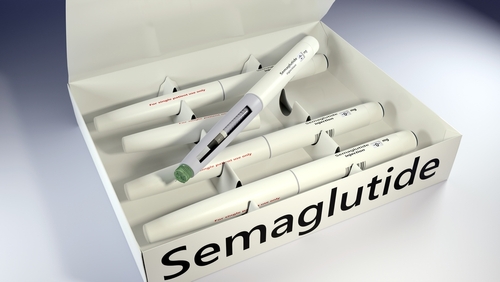Among patients on hemodialysis, the mortality rate is 13.6 per 100 person-years, higher than in the general population. Sudden cardiac death is the leading cause of death in patients on hemodialysis, caused primarily by hyperkalemia, making serum potassium of particular interest in the management of dialysis patients. Serum potassium levels during dialysis are determined on the basis of the predialysis potassium level, making assessment of predialysis potassium a possible aid in the prevention of sudden cardiac death associated with hyperkalemia.
However, according to researchers in Japan, led by Tsuyoshi Ohnishi, PhD, the effects of hypokalemia may be underestimated. Dialysate usually has lower potassium concentration than serum, causing serum potassium levels to drop significantly following dialysis; 45% of patients present with postdialysis hypokalemia (≤3.5 mEq/L).
The researchers conducted a cohort study to test the hypothesis that postdialysis potassium is a clinically important factor associated with mortality. The study was designed to examine the relationship between postdialysis potassium and all-cause mortality. The study utilized data from the Dialysis Outcomes and Practice Patterns Study in Japan (J-DOPPS). Results of the study were reported in the Clinical Journal of the American Society of Nephrology [2019;14(6):873-881].
The observational period began at study enrollment and ended at death, kidney transplant, loss to follow-up, or the end of the study, whichever came first. The primary outcome of interest was all-cause death during the observational period.
Patients were stratified into one of four groups based on baseline postdialysis potassium levels: (1) low group, potassium <3.0 mEq/L; (2) medium-low group, potassium 3.0 to <3.5 mEq/L; (3) medium-high group, 3.5 to <4.0 mEq/L; and (4) high group, potassium ≥4.0 mEq/L. The time course of each group over the observation period was determined using Kaplan-Meier curves.
Study participants had been treated at 61 facilities. Of 4675 potentially eligible participants, 117 were excluded due to short dialysis duration and 591 were excluded due to lack of baseline postdialysis potassium level measurement. The final number of eligible participants was 3967: 1929 were in J-DOPPS phase 4 (2009-2012) and 2038 were in J-DOPPS phase 5 (2012-2015).
Of the total cohort, 64% were men (n=2552) and 36% were women (n=1415), median age was 65 years, and median dialysis vintage was 3.9 years. There were 374 patients in the low group, 1752 in the medium-low group, 1427 in the medium-high group, and 414 in the high group. Patients in the low group tended to be elderly and frail, with high average age, low body mass index, low albumin level, high C-reactive protein level, and low normalized protein catabolic ratio. Patients in the low group also had the highest prevalence of chronic heart failure, cancer, psychiatric disorders, and cerebrovascular disease.
Overall, >30% of patients were treated with angiotensin II receptor blockers; there was no specific trend for any medication in any group. Ninety-six percent (3804/3967) were treated with dialysate potassium of 2.0 to <2.5 mEq/L, a trend that was consistent in all four groups. Only 21 participants were treated with low (<2.0 mEq/L) or high (≥2.5 mEq/L) dialysate potassium.
During the median observational period of 2.6 years, 14% of participants died (n=552/3967): 96 in the low postdialysis potassium group, 220 in the medium-low group, 179 in the medium-high group, and 57 in the high postdialysis group. The incidence rates were 11.2, 6.0, 6.2, and 7.4 per 100 person-year, respectively; the overall incidence rate was 6.7 per 100 person-years. The most common causes of death were sudden death and infectious disease.
In analyses using postdialysis potassium as a categorical variable, there was a significant association between postdialysis hypokalemia (<3.0 mEq/L) and mortality in unadjusted analysis (hazard ratio [HR], 1.84; 95% confidence interval [CI], 1.44-2.34; P<.01). Following adjustment for baseline confounders of patient demographic characteristics, comorbidities, and medications, the HR of postdialysis hypokalemia was 1.41 (95% CI, 0.97-2.05; P=.07).
In a model that included adjustment for baseline confounders plus time-varying laboratory variables without predialysis potassium, the HR of postdialysis hypokalemia was 1.44 (95% CI, 1.14-1.82; P<.01). In a third model , following further adjustment for time-varying predialysis potassium, the HR of postdialysis hypokalemia was 1.10 (95% CI, 0.84-1.44; P=.49). There was no association between medium-high and high postdialysis potassium and mortality in either model.
In patients with predialysis hypokalemia only, the HR was 1.40 (95% CI, 1.02-1.91; P=.04). In patients with both pre- and postdialysis hypokalemia, the HR was 1.72 (95% CI, 1.35-2.19; P<.01). The P value for interaction among combination categories was <.01.
In citing limitations to the study, the authors included the inability to establish causality due to the observational design; the findings possibly not including residual confounding factors such as malnutrition and inflammation; the uncertainty of the generalizability of the findings to patients treated with dialysis for extremely long or short periods; the possibility that treatment quality in each facility may have confounded the results; and measuring postdialysis potassium levels only once during each dialysis session.
“In conclusion, postdialysis hypokalemia was associated with mortality, but the association was not independent of predialysis potassium. Having both pre- and postdialysis hypokalemia was associated with the highest mortality,” the researchers said.
Takeaway Points
- Nearly half of patients on hemodialysis have a postdialysis serum potassium level of ≤3.5 mEq/L. Researchers in Japan conducted an observational cohort study to examine the relationship between postdialysis potassium levels and all-cause mortality.
- In a cohort of 3967 participants, there was an association between postdialysis hypokalemia (<3.5 mEq/L) and mortality; the association was not independent of predialysis potassium level.
- Having both pre- and postdialysis hypokalemia was associated with the highest mortality.







 © 2025 Mashup Media, LLC, a Formedics Property. All Rights Reserved.
© 2025 Mashup Media, LLC, a Formedics Property. All Rights Reserved.